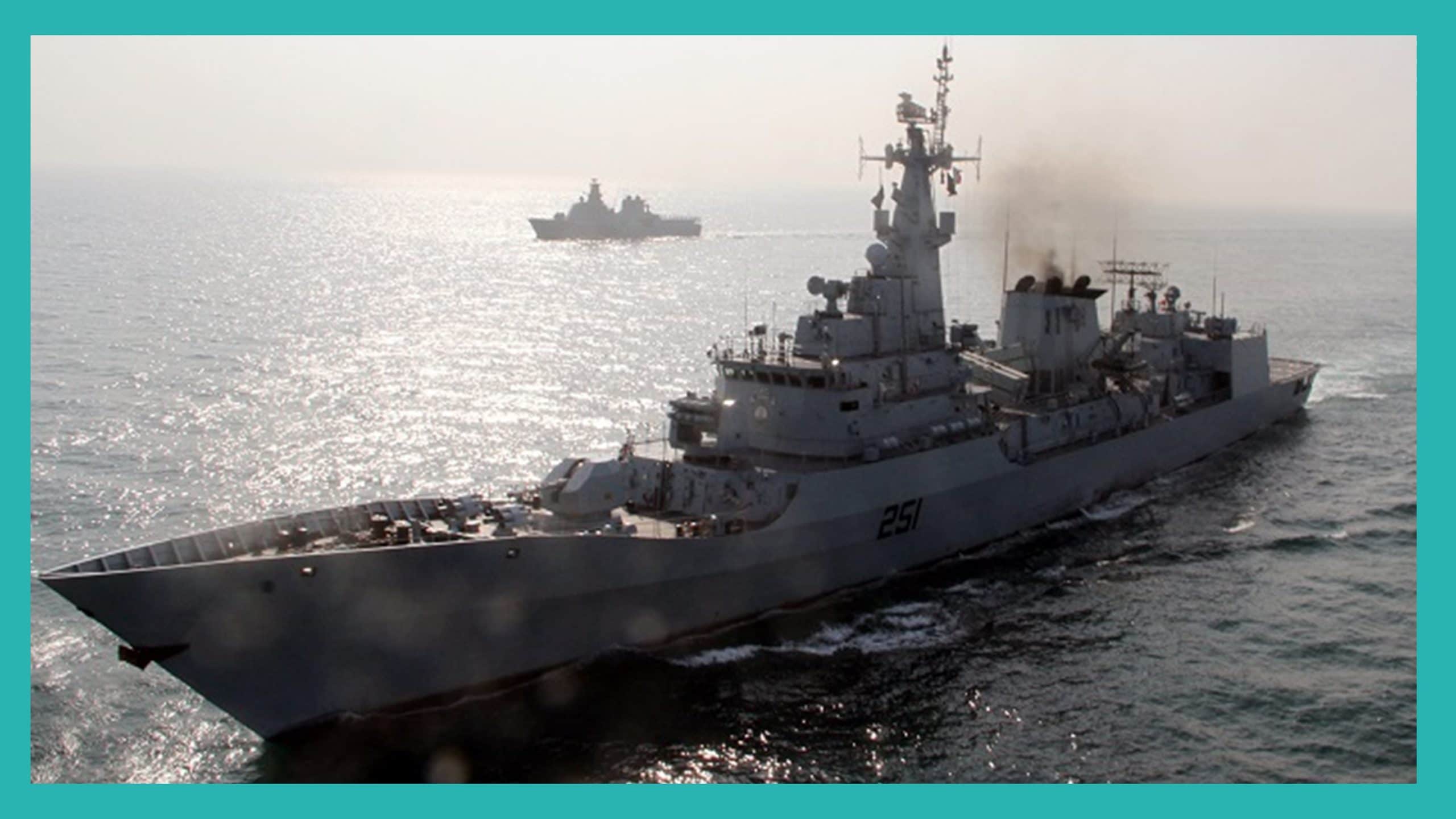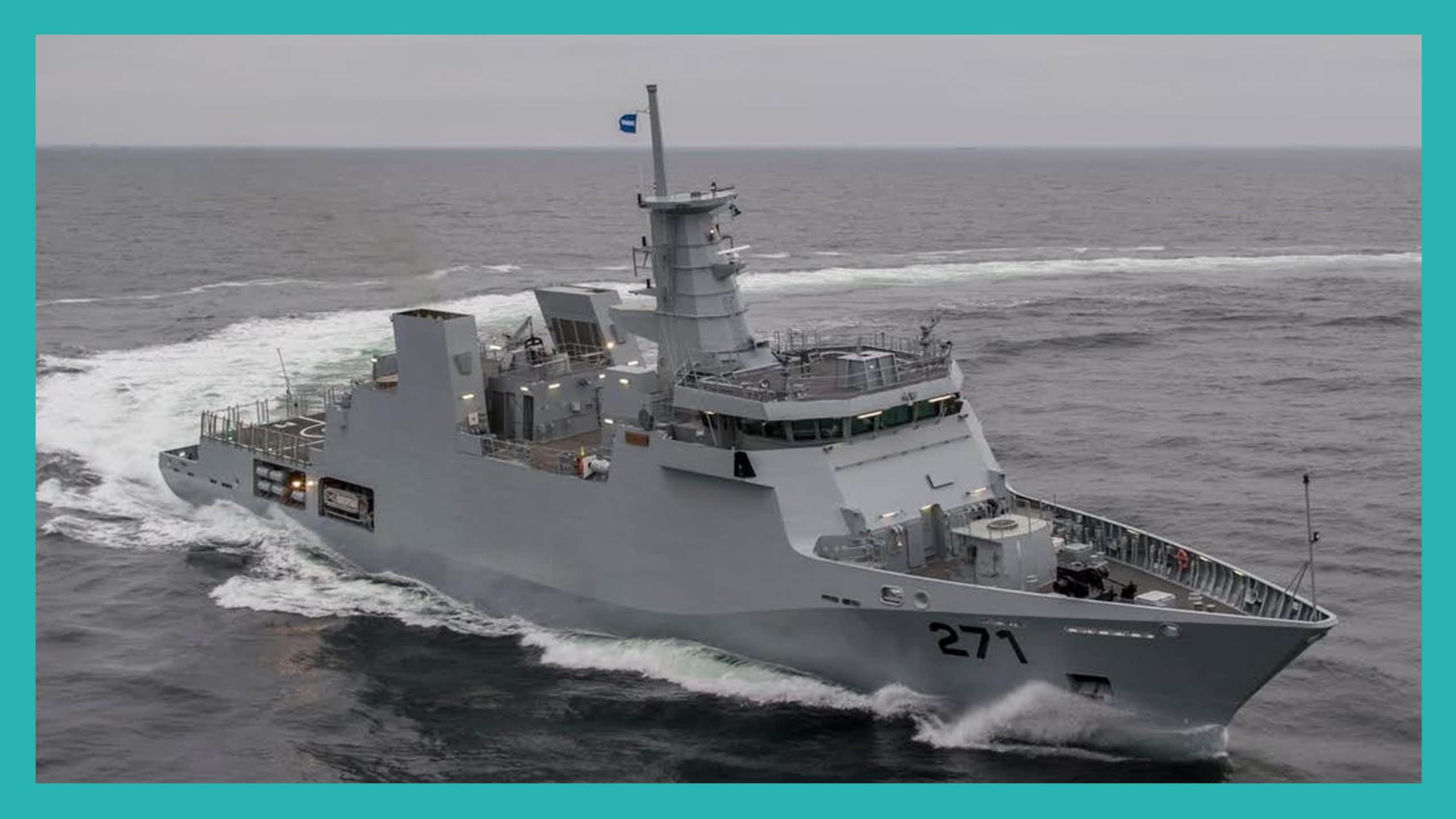8Views 0Comments

How Pakistan Should Equip its Ships for Naval Air Threats
Author Profile: Usman Ansari is a journalist specializing in defence issues and presently based in Pakistan. He is Pakistan Correspondent for the US media group Defense News, and Chief Analyst for the British naval news monthly Warships – International Fleet Review. He has a BA in International History and International Politics, and MA in Global Security, both from Keele University, UK.
By Usman Ansari
The Pakistan Navy (PN) operates in a dense missile and electronic warfare (EW) threat environment, but ongoing obsolescence issues limit the effectiveness of its frontline warships in performing their primary territorial defence role.
The main shortcomings of Pakistani warships are their ineffective defences against aerial threats, especially the current generation of stealthy sub-sonic and supersonic anti-ship missiles. Presently, these missiles may overwhelm Pakistani warship defences if fired in salvo.
Pakistani frigates are presently equipped with six or eight round surface-to-air missile (SAM) launchers. These launchers have no reloads, and though potentially capable against single inbound threats, these SAMs are dependent on launcher orientation. This in itself supposes the ship will not first need to manoeuvre to allow the launcher to be brought to bear, which would reduce the engagement and reaction time against an incoming target that may arrive before this can be achieved.
Present close-in-weapon-system (CIWS) types – of which there are three different systems in service with a fourth to follow – are also limited in the coverage they provide due to their physical position. Like most such systems, they may also need more than one burst to bring down a threat, and in general, the end-user should view them as the final line of defence against a single threat penetrating all other defences.
Alongside the development of advanced combat management systems (CMS) – such as the Aegis –
Western reactions to advanced (including supersonic) missile threats led to the development of a spate of new SAMs. These include, among others, the RIM-162 Evolved Sea Sparrow (ESSM), RIM-116 Rolling Airframe Missile (RAM) Point Defence Missile System (PDMS), Aster missile family, Sea Ceptor, plus improvements to existing CIWS such as the Phalanx Block-1B, and new guided and/or programmable ammunition.
For financial and geopolitical reasons, Pakistan has only been able to upgrade its CIWS platforms and replace legacy soft kill systems with more modern equivalents.
While this is inadequate in terms of ship defence, the PN partially mitigated the deficit by extending the range of its anti-ship capabilities. In terms of the latter, the Harbah and Zarb anti-ship cruising missiles (ASCM) will play a leading role in the PN’s long-range anti-ship capabilities.
Proliferation of land attack cruise missiles (LACM) coupled with India’s growing carrier strike capabilities dictated the need to extend the range at which the PN can deter enemy warships from closing towards and threatening its shores. This has been achieved to some degree with the Harbah and Zarb, both of which appear to leverage heavyweight warheads in conjunction with long engagement ranges.
Likewise, the procurement of new warships was limited due to fiscal constraints. However, the looming obsolescence of the existing fleet has evidently pushed Pakistan to invest in new systems.
The various new-build 2,000+ ton warships – i.e., the four Type 054A/P, four MILGEM, two OPV 1900s – and probable upgrades to the F-22P will transform the PN surface fleet.
To operate in South Asia’s dense missile threat environment, these warships will need rapid-reaction, vertical-launch system (VLS)-based SAMs. This configuration will allow for omni-directional coverages.
The LY-80N (the naval variant of the Army’s land-based system), will equip the Type-054A/P. It is a very capable, but bulky and heavy missile[1] in relation to the performance it offers.
As a semi-active radar homing (SARM) SAM, the LY-80 also depends on four prominent MR-90 Fire Control Radars (FCR) to illuminate targets. These are also visible on depictions of the Type-054A/P, meaning it is limited to simultaneously intercepting perhaps up to eight targets at a time, potentially restricting its ability to deal with a determined saturation attack.[2]
Newer missile types deliver a comparable or superior capability by primarily using active radar guidance, which reduce the size and weight of these missiles. In turn, onboard VLS suites can carry more of these compact missiles, especially through quad-pack configurations (i.e., wherein one VLS cell can carry four SAMs, which can allow a 16-cell system to carry 64 SAMs).
In the PN’s environment, quad-packing SAMs could allow its ships to leverage relatively effective anti-air capabilities (i.e., multi-and-omni-directional targeting and launching, simultaneous firing, and sustaining enough rounds). Not only could a single PN ship better defend itself against singular and saturated anti-ship missile threats, but they need not rely on re-supply as often. Thus, the survivability and versatility of these ships go up.
Though the Type-054A/P offers 32 VLS cells, the adoption of the HQ-16E/LY-80N will not deliver the desired level of flexibility due to its bulk, weight, and older guidance system. Therefore, the LY-80N is unsuitable as a long-term anti-air warfare (AAW) solution.
Images purporting to depict China’s Type-054X next generation frigate[3] show an absence of any FCRs. This may imply that China either integrated the fire control functions into the main active electronically-scanned array (AESA) radar and/or adoption of an active-radar homing (ARH) SAM.
It is unclear what this new SAM would be. The introduction of a PL-12 or SD-10-based, quad-packable SAM is plausible, but it is unclear if China is moving towards this route. China may also develop a new version of the HQ-16 – i.e., HQ-16C – with dual active and passive-guidance.[4][5]
Through China, Pakistan has at least two potential long-term replacement options for the LY-80N that will improve the Type-054A/P’s area air defence capabilities and effectiveness against saturation attack.
The SAM question also has critical bearing on the F-22P upgrade program.
This program is likely to be launched once a sufficient number of new ships are operational, but the extent of this work is uncertain as both AAW and anti-submarine warfare (ASW) are both clear areas for improvement.
Replacing the FM90N with a VL-SAM system may be problematic as physical space, structural integrity, and top weight constraints may preclude installation of a sizable VLS module.
A new LY-80N-equipped ship design (also armed with the FL3000N PDMS and Type-730 CIWS) based on the F-22P featuring an integrated mast with a fixed four face AESA radar (also apparently handling fire control) was proposed by China at IDEAS2016.[6]
The design was clearly closely tailored to Pakistan’s operational environment and industrial capabilities considering the final F-22P had been domestically built by KSEW.
It is uncertain if the features of this proposed design can make their way to the PN’s existing ships or were only physically/technically possible with a new build vessel.
The selected SAM therefore must be lightweight, but which would also limit costly reconstruction work on the ship. Therefore, an approach relying on a simple replacement of existing systems with modern equivalents is more realistic.
The PN could potentially base an F-22P upgrade on the MILGEM’s configuration. Turkey laid the keel of the first ship in June, while Karachi Shipyard & Engineering Works (KSEW) cut the steel of the first locally built ship a short while later.
KSEW’s illustration of the MILGEM showed a vastly modified variant of the Ada. In fact, the AAW layout seems at-par with the Istanbul-class frigate, i.e., a 16-cell VLS module. However, it is unclear what SAM the PN will use onboard the MILGEM.
Though the LY-80N may have been an option, the lack of any dedicated FCRs implies that this SAM is in fact a different model, one with ARH-based seekers.
While the Turkish Gökdeniz CIWS has replaced the originally proposed RIM-116 RAM, Turkey does not yet appear to be a in a position to supply the main SAM system.
Pakistan had previously shown strong interest in the South African Denel Dynamics Umkhonto SAM, but the performance advantage of the British Sea Ceptor would make it a far better choice. Whether this is affordable, or even available, remains to be seen. Sea Ceptor is also being offered to the Indian Navy (IN) for its short-range SAM requirement, and with the option of local production.[7] This may preclude the UK from supplying it, but MBDA Italy may try, especially with the Common Anti-Air Modular Missile-Extended Range (CAMM-ER), which Italy is funding on its own.[8]
Other bulkier alternatives, such as the Aster-15, may preclude selection for a potential F-22P upgrade.
Despite the uncertainties in the modernization programs, however, there is still room for optimism as equipment options will only increase as at least Chinese and Turkish weapons systems technologies advance. Future upgrades involving such systems may yet therefore deliver the desired increase in flexibility.
[1] Profile. HQ-16 Medium-Range Air Defence Missile System. Military Today. URL: http://www.military-today.com/missiles/hq16.htm
[2] Henri Kenhmann. “LY-80N: the naval VLS system dedicated to export.” East Pendulum. 27 November 2016. URL: http://www.eastpendulum.com/ly-80n-systeme-vls-naval-export
[3] Ryan White. “Images of Chinese Navy’s next frigate.” Naval News. 18 May 2020. URL: https://navalnews.net/images-of-chinese-navys-next-frigate/
[4] Henri Kenhmann. “LY-80N: the naval VLS system dedicated to export.” East Pendulum. 27 November 2016. URL: http://www.eastpendulum.com/ly-80n-systeme-vls-naval-export
[5] Richard D. Fisher Jr. “China develops longer-range HQ-16 SAM variant.” Jane’s Defence Weekly. 07 September 2016. URL: https://web.archive.org/web/20160908164906/http://www.janes.com/article/63500/china-develops-longer-range-hq-16-sam-variant
[6] Henri Kenhmann. “CSSC unveils a new version of the C28A frigate.” East Pendulum. 25 November 2016. URL: http://www.eastpendulum.com/cssc-devoile-nouvelle-version-de-fregate-c28a
[7] Gordon Arthur. “DefExpo 2020: MBDA launches missile bids in India.” Shephard Media. 06 February 2020. URL: https://www.shephardmedia.com/news/naval-warfare/defexpo-2020-mbda-launches-missile-bids-india/
[8] Pietro Batacchi. “The CAMM ER starts again.” Rivista Italian Difesa. 20 June 2019. URL: https://www.portaledifesa.it/index~phppag,3_id,3109.html


